Ultimate Guide to Seitan: High-Protein Vegan Meat Alternative
Learn how to make seitan, a high-protein vegan meat alternative, with this easy-to-follow guide. Discover tips on perfecting its chewy texture and savory flavor, making it a versatile addition to your plant-based meals.

Seitan, often called “wheat meat,” is made from vital wheat gluten and is incredibly high in protein, low in fat, and affordable to make. It’s an excellent substitute for meat, fish, or chicken in a variety of dishes.
It can sometimes be found on restaurant menus and in grocery stores, and you can easily make it at home because it bakes in the oven just like bread but has a meaty chewy texture so it can be used as a vegan meat alternative in many recipes.
We have several delicious recipes that use seitan on this website like this sweet and sour oil-free vegan stir-fry, our crockpot vegan BBQ for sandwiches, and my amazing vegan seitan roast.
What is seitan?
Seitan is becoming more and more popular in vegetarian, vegan, and plant-based communities as a meat substitute. It has a look and texture amazingly similar to cooked meat.
The history of seitan dates back to at least the 6th century AD. Its use was first recorded in Chinese literature for making noodles, and it has been a common meat substitute in Asian cultures for thousands of years.
Seitan is not made from soy–unlike tofu and tempeh. It is made from wheat and is also known as wheat meat, which means it is obviously not gluten-free.
Whether you make it yourself or buy it pre-cooked, seitan is quite healthy and good for you. It is low in calories with only 100 calories per 3-ounce serving. It is also very low in fat and has a whopping 21 grams of protein!
Reasons you will love seitan
- High in Protein: Seitan is a protein-packed meat alternative, perfect for vegans and vegetarians looking to boost their protein intake.
- Affordable and Easy to Make: With just a few ingredients, seitan is cost-effective and simple to prepare at home, making it a budget-friendly choice.
- Versatile Meat Substitute: Seitan’s chewy texture and savory flavor make it a great replacement for meat, fish, or chicken in a variety of dishes.
- Low in Fat: Naturally low in fat, seitan is a healthy option for those looking to maintain a balanced, nutritious diet without sacrificing taste.
Ingredients you will need

- Vital wheat gluten- It is essential for making seitan because it’s the concentrated protein from wheat, giving seitan its signature chewy, meat-like texture.
- Veggie broth- It infuses the dough with rich, savory flavors during the cooking process. Since seitan by itself can have a mild taste, simmering or steaming it in vegetable broth adds depth and enhances its overall flavor.
- Soy sauce- Adds a deep, umami flavor and enhances its savory profile, making it taste more like meat. It also adds a bit of saltiness, which helps balance the other seasonings in the dough.
- Spices- The spices to use are versatile, but my choices include garlic powder, onion powder, smoked paprika, oregano, and salt.
Washed flour method
I will tell you upfront that this is not how I make seitan, and I have never personally tried it because it is so very time-consuming. Instead, I use vital wheat gluten.
The washed flour method for making seitan eliminates the need for vital wheat gluten by using plain flour and water to create a chewy texture, though it is much more time-consuming. The dough is kneaded and then repeatedly rinsed to remove the starch, leaving behind pure wheat gluten.
This method creates a chewy, meat-like texture that’s perfect for plant-based dishes. While it takes a bit more time compared to using vital wheat gluten, many people prefer the washed flour method because it results in a softer, more tender seitan with a mild flavor that easily absorbs seasonings. If you want to learn more about this method of making seitan, The Viet Vegan has a great guide.
How to make seitan
Seitan is simple to make and the process is much like making bread with kneading and allowing the dough to rise. However, it does differ from bread because with seitan, the starch is removed from the dough, leaving behind just the protein. This is accomplished either by kneading the dough underwater to release and wash away the starch, or it can be done by using a special flour known as vital gluten wheat.
The recipe card at the bottom of the page has the full list of ingredients with measurements and instructions.

STEP #1: Begin by preheating your oven to 350°F (175°C). In a large mixing bowl, add the vital wheat gluten, nutritional yeast, and dry spices. Whisk together well and set to the side.
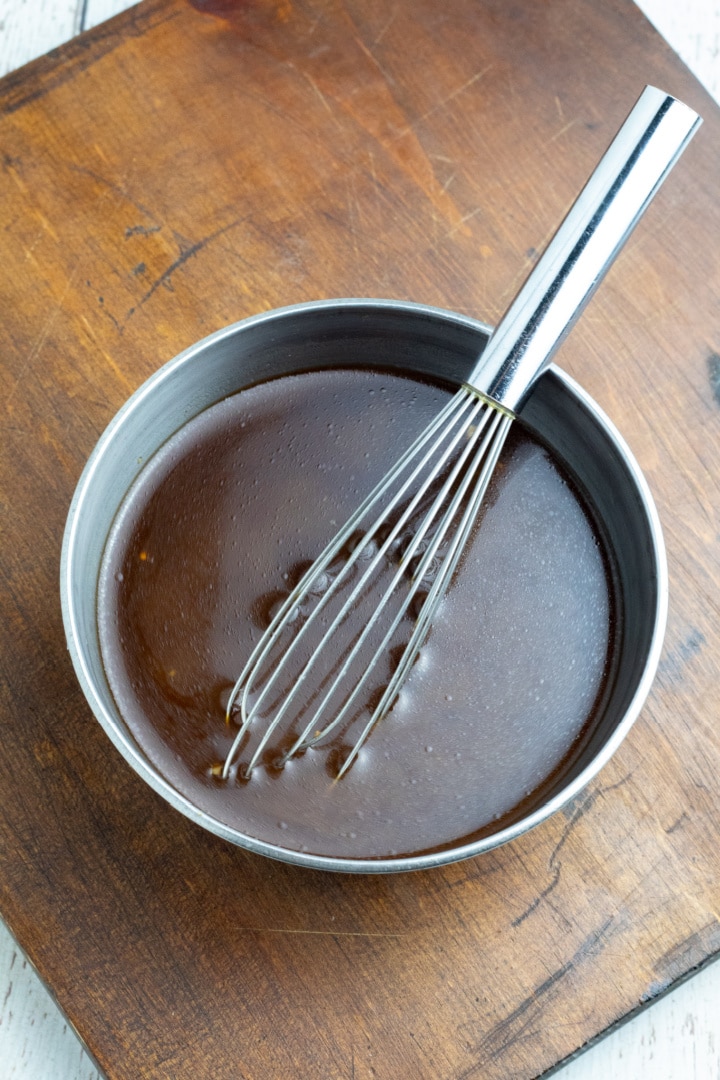
STEP #2: In a medium-sized bowl, whisk together the veggie broth and soy sauce.
We are mixing the dry and wet ingredients separately because when they combine, thickening will begin immediately.

STEP #3: Add the wet mixture to the dry mixture. Once it’s mixed as well as you can get with a spoon, it is time to get your hands into it and begin kneading.
If it seems a little too dry, it’s okay to add a splash of veggie broth. Knead for about 3 minutes or so. The longer you knead it, the chewier the finished product will be.

STEP #4: Set to the side and allow to rest for 10 minutes. Then knead for another 2-3 minutes. The longer you knead, the chewier the seitan will be after baking.
Form the dough into a log that is about the size of a roast, around 10 inches by 5 inches.
Place it on the parchment paper, roll it up tightly, and tuck the ends underneath.

STEP #5: Next, take the log that is on parchment paper and wrap it up in foil to help hold in the moisture. Tuck the foil ends under as well.

STEP #6: Place the roast on a baking sheet or pan and pop it into the preheated oven. Bake for approximately 1 hour, flipping it every 20 minutes to ensure that it cooks well on all sides.
Remove from the oven and let it cool for about 15 minutes before slicing and serving as a vegan meat replacer in stir-fries, on sandwiches and wraps, or in other recipes.
The Bottom Line
Making seitan is a breeze and a blast, perfect for anyone diving into plant-based cooking. With just a few simple ingredients like vital wheat gluten or plain flour and water, you can whip up a tasty, protein-rich meat alternative.
Seitan’s chewy texture and knack for soaking up flavors make it a fantastic stand-in for chicken, beef, or fish in all sorts of dishes. Plus, it’s super customizable—get creative with your seasonings and cooking methods to make it just right for your taste buds!
Frequently Asked Questions
Yes, you can use the washed flour method to make seitan, which involves rinsing wheat flour dough to remove the starch and leave behind the gluten. This method is more time-consuming and requires more effort but results in a similar texture to seitan made with vital wheat gluten.
Seitan has a mild, bland flavor on its own but can take on many more flavors from different recipes. The thing that makes seitan most popular is its texture, more than taste. When compared to tofu or tempeh, seitan has a much more meaty texture.
Seitan can be seasoned with a variety of herbs, spices, and sauces to suit your taste. Common seasonings include soy sauce, garlic, ginger, and smoked paprika. Marinating it before cooking can also add extra flavor.
Yes, seitan freezes well. To freeze, let it cool completely, then store it in an airtight container or freezer bag. It can be thawed in the refrigerator before use or cooked from frozen.

Also, be sure to check out our Seitan Recipes page for more great ideas!
If you try this recipe, please let us know how you like it by rating it and leaving a comment. We love to hear from you!
Want to Save This Recipe?
Enter your email & I’ll send it to your inbox. Plus, get great new recipes from me every week!
By submitting this form, you consent to receive emails from EatPlant-Based
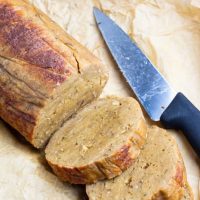
How to Make Seitan (Easy Step-by-Step Guide)
Ingredients
- 2 cup vital wheat gluten
- 1.5 cups vegetable broth or water
- 2 tablespoons soy sauce
- 2 tablespoons nutritional yeast flakes
- 1 teaspoon garlic powder
- 1 teaspoon onion powder
- 1/2 teaspoon smoked paprika
- 1/2 teaspoon oregano
- 1/4 teaspoon salt optional
Instructions
- Begin by preheating your oven to 350°F (175°C). In a large mixing bowl, add the vital wheat gluten, nutritional yeast, and dry spices. Whisk together well and set to the side.
- In a medium-sized bowl, whisk together the veggie broth and soy sauce.
- Add the wet mixture to the dry mixture. Once it’s mixed as well as you can get with a spoon, it is time to get your hands into it and begin kneading. If it seems a little too dry, it’s okay to add a splash of veggie broth. Knead for about 3 minutes or so. The longer you knead it, the chewier the finished product will be.
- Set to the side and allow to rest for 10 minutes. Then knead for another 2-3 minutes. The longer you knead, the chewier the seitan will be after baking.
- Form the dough into a log that is about the size of a roast, around 10 inches by 5 inches.
- Place it on the parchment paper, roll it up tightly, and tuck the ends underneath. I have included photos above to help you visualize.
- Next, take the log that is on parchment paper and wrap it up in foil to help hold in the moisture. Tuck the foil ends under as well.
- Place the roast on a baking sheet or pan and pop it into the preheated oven. Bake for approximately 1 hour, flipping it every 20 minutes to ensure that it cooks well on all sides.
- Remove from the oven and let it cool for about 15 minutes before slicing and serving as a vegan meat replacer in stir-fries, on sandwiches and wraps, or in other recipes.
Video
Notes
Nutrition
Disclaimer
To obtain the most accurate representation of the nutritional information in a given recipe, you should calculate the nutritional information with the actual ingredients used in your recipe, using your preferred nutrition calculator. You are solely responsible for ensuring that any nutritional information provided is accurate, complete, and useful.
About Terri Edwards
Hi guys! I am the content creator behind EatPlant-Based and a licensed Food for Life instructor with the Physicians Committee for Responsible Medicine. I am passionate about sharing healthy recipes and tips to empower others to get healthy. I’m so glad you’re here! Read More…

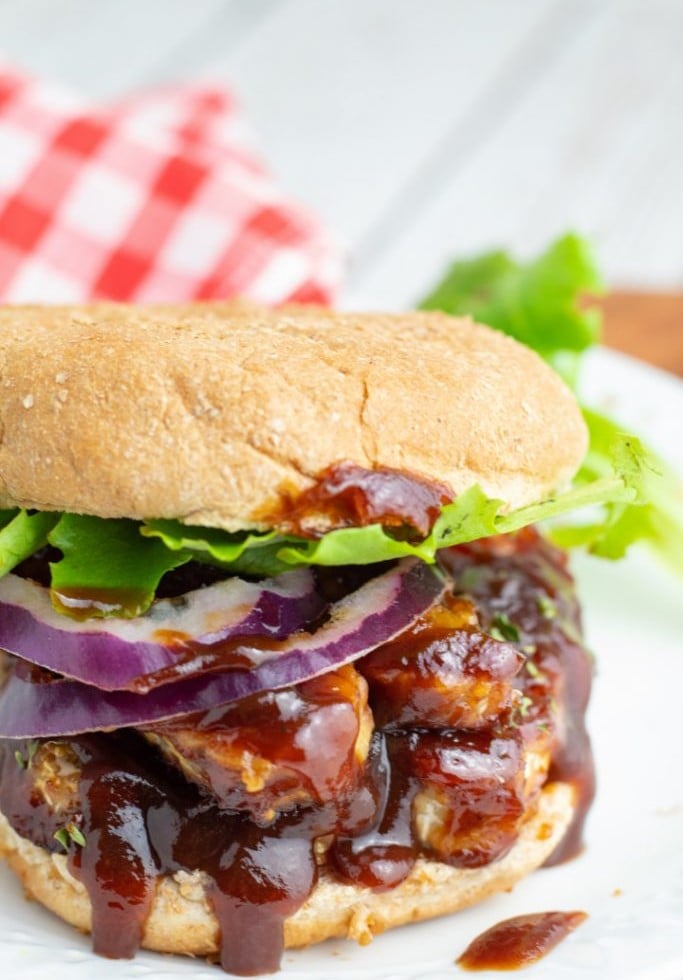
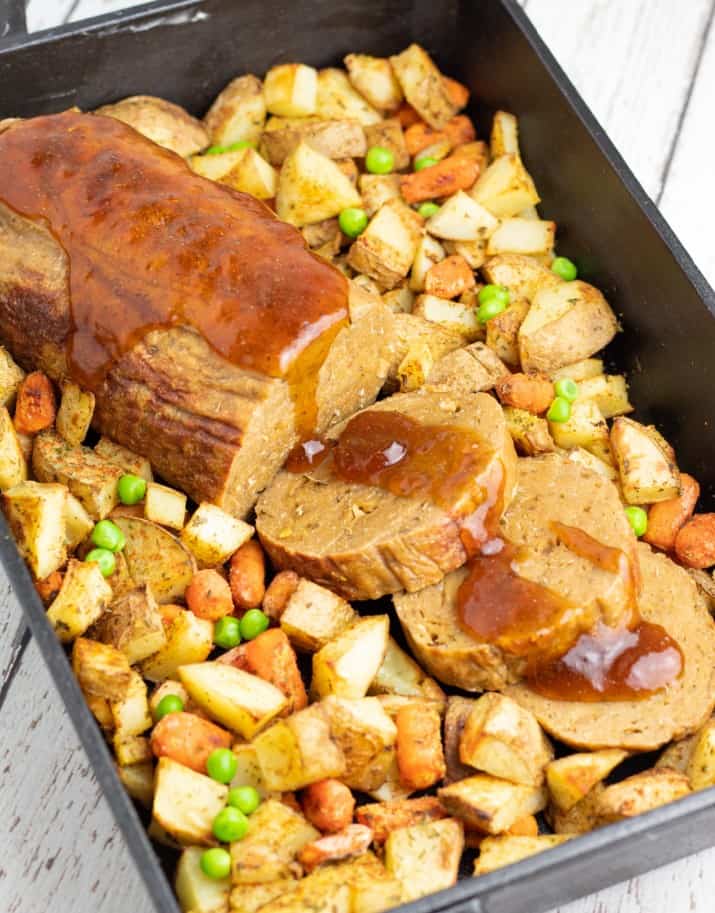

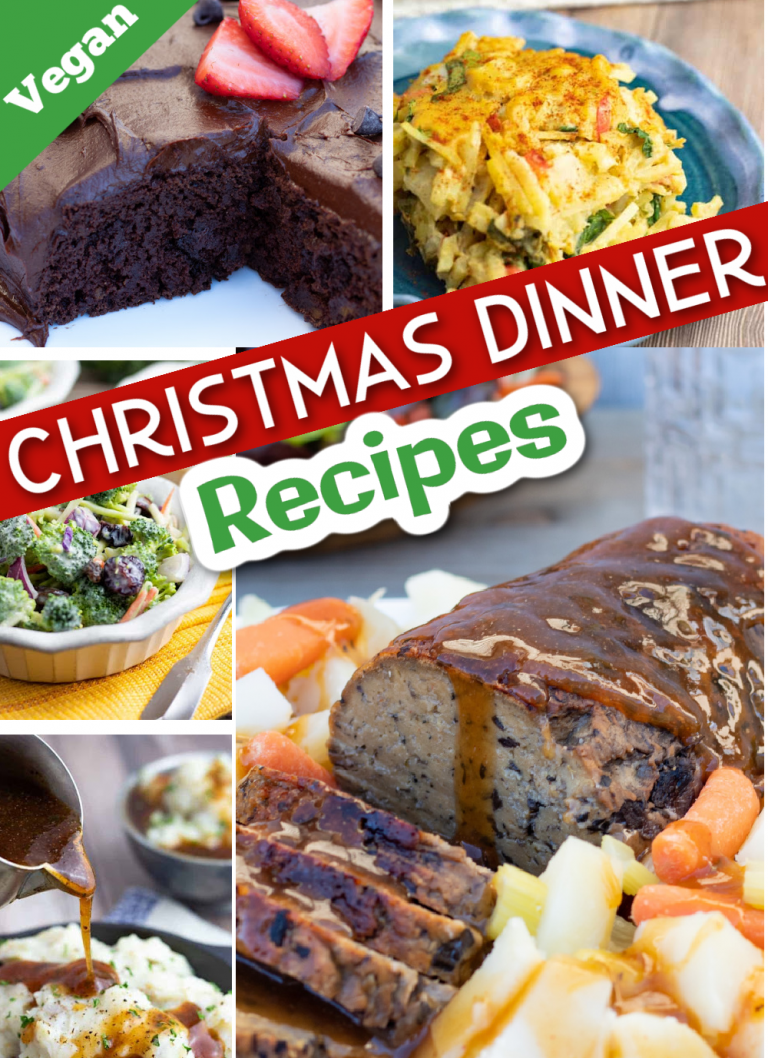

What was the flour you used?
If you use VWG do you still need to rinse the dough?